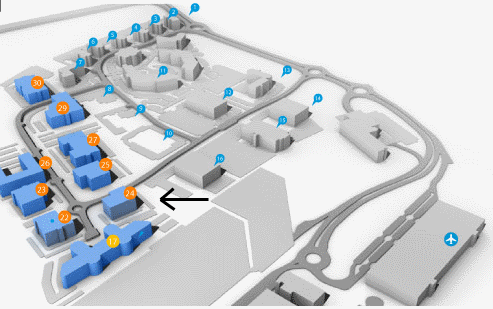Current Size: 100%

- Publications
- Cancer atlases
- 2.2.4.1 Population
NCR books
- Cancer Atlas
- Acknowledgements
- Foreword
- Summary
- 1. Introduction
- 2. Methods
- 2.1 Geographical Terms
- 2.2 Data Included in the Atlas
- 2.3 Statistical Methods
- 3. Non-melanoma skin cancer
- 4. Breast cancer
- 5. Colorectal cancer
- 6. Lung cancer
- 7. Prostate cancer
- 8. Non-Hodgkin's lymphoma
- 9. Stomach cancer
- 10. Melanoma of the skin
- 11. Bladder cancer
- 12. Head and neck cancer
- 13. Leukaemia
- 14. Pancreatic cancer
- 15. Kidney cancer
- 16. Oesophageal cancer
- 17. Ovarian cancer
- 18. Brain and other central nervous system cancer
- 19. Cancer of the corpus uteri
- 20. Cancer of cervix uteri
- 21. Discussion
- 22. Conclusions and recommendations
- Appendix 1: Relative risks (with 95% confidence intervals) by area characteristic, cancer site and sex
- Appendix 2: Electoral division tables
- Appendix 3: Summary statistics for each cancer site
- Appendix 4: Regions referred to in the atlas
- References
- Index of figures, maps and tables
2.2.4.1 Population
Northern Ireland
A census of population was carried out in NI in 2001, the only census between 1995 and 2007. This census provided population data, broken down by sex and age, for 582 wards in 26 district councils. Population estimates for each year were available by sex and age at district council level. Annual estimates for the wards were derived from these total annual estimates, using the 2001 census as the basis for the splits by ward. The estimates for each year were then averaged to give an estimated average population by ward for the 1995-2007 period. Over this period the wards had an average population of 2,913, ranging from 784 (Bushmills, Moyle) to 9,654 (Botanic, Belfast) (Table 2.3, Figure 2.1).
Table 2.3 Population distribution of NI wards and RoI EDs
number of areas | mean population | standard error of mean | standard deviation | minimum population | 25th percentile | median | 75th percentile | maximum population | |
NI wards | 582 | 2913 | 48 | 1147 | 784 | 2219 | 2618 | 3238 | 9654 |
RoI EDs | 3355 | 1161 | 34 | 1956 | 62 | 309 | 525 | 1146 | 33983 |
Figure 2.1 Population distribution of NI wards and RoI EDs
RoI | |
 |  |
Republic of Ireland
Three censuses were carried out in RoI during the period of this report, in 1996, 2002 and 2006. These censuses provided population data, broken down by sex and age, for 3,422 EDs in 1996 and 2002, and for 3,409 EDs in 2006. Population data were derived from the census small area population statistics (SAPS) files for 1996, 2002 and 2006. Official CSO estimates of the total population split by sex and age (but not by ED) were available for each year from 1995 to 2007. Annual estimates for the EDs were derived from the appropriate census and the CSO total annual estimates–the 1996 census results were used as the basis for the ED populations for 1995, a linear interpolation of the 1996 and 2002 census counts was used for 1997-2001, a linear interpolation of the 2002 and 2006 census counts was used for 2003-2005, and the 2006 census results were used for 2007 estimates. The estimates for each year were then averaged to give an estimated average population by ED for the period 1995-2007.
The average ED population over the period was 1,161; ranging from 62 (Mountstuart, Co. Waterford) to 33,983 (Dundalk Urban, Co. Louth) (Table 2.3, Figure 2.1). Dundalk Urban District comprised a number of EDs in 2006 which were merged for the purposes of this atlas (see below); this merged area was the largest single population unit treated as an ED in RoI. The population of the largest single ED (Blanchardstown-Blakestown) was 23,179.
At each census, the population of a number of EDs was so low that the CSO considered these EDs "confidential", published only total population figures for them, and amalgamated them with one or more neighbouring EDs for the purpose of reporting age-specific population numbers. EDs were considered confidential by the CSO if they included either 15 households or less, or 50 persons or less. There were 12 such confidential EDs in 1996, 19 in 2002 and 32 in 2006. Three of the 2006 confidential EDs had been merged with different EDs in 2002 and so, to create an estimated population for each ED for 1995-2007, any EDs that had been merged during any of these censuses were combined. These are shown in Appendix table A2.1.
The definition of a small number of EDs, and therefore the associated SAPS data, changed between the 1996 and 2002 censuses. These changes consisted of splitting or amalgamation of areas, rather than any movement of boundaries. EDs which had changed in this way were combined for analysis, and the available age and sex distribution similarly combined (Appendix table A2.2). In addition, between 1996 and 2006 there was considerable population growth in a number of towns, many of which consisted of a single ED (urban part), with a surrounding ED (rural part). As the population of these towns increased, they expanded into the rural area, but the ED boundaries remained unchanged. Because of the uncertainty of geocoding of new buildings in these towns, the urban and rural EDs were combined for analysis (Appendix table A2.3). Finally, for the towns of Drogheda, Dundalk and Wexford, population splits were not available for all EDs for all censuses, and the affected EDs were also merged for analysis (Appendix table A2.4). The population of the largest merged ED (Dundalk Urban) was 33,983. This combining of areas gave a final total of 3,355 EDs.
Building 6800
Cork Airport Business Park
Kinsale Road, Cork T12 CDF7
Email Contact us here
Tel: +353 (0) 21 4318014
Fax: +353 (0) 21 4318016




